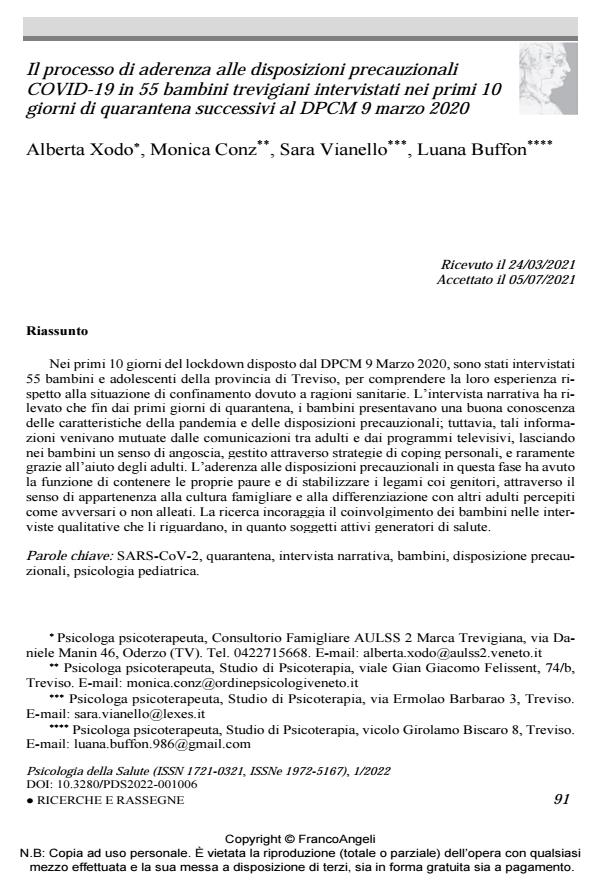The adherence process to COVID-19 precautionary measures in 55 children from Treviso interviewed during the first 10 days of lockdown set by Prime Minister Decree on 9th March 2020
Journal title PSICOLOGIA DELLA SALUTE
Author/s Alberta Xodo, Monica Conz, Sara Vianello, Luana Buffon
Publishing Year 2022 Issue 2022/1
Language Italian Pages 23 P. 91-113 File size 318 KB
DOI 10.3280/PDS2022-001006
DOI is like a bar code for intellectual property: to have more infomation
click here
Below, you can see the article first page
If you want to buy this article in PDF format, you can do it, following the instructions to buy download credits

FrancoAngeli is member of Publishers International Linking Association, Inc (PILA), a not-for-profit association which run the CrossRef service enabling links to and from online scholarly content.
We interviewed 55 children and adolescents from Treviso province to understand how they experienced their confinement at home due to public health reasons, during the first ten days of lockdown set by Prime Minister Decree on 9th March 2020. The narrative interview showed how children had a good knowledge of the main characteristics both of the pandemic and of the precautions set by law since the very early days of the confinement. The knowledge came from communications among adults or from TV programs, leaving children in a state of anguish managed mainly through individual coping strategies and seldom with the help of adults. The adherence to precautionary measures limited fear and reinforced the bond within the family, by means of the sense of belonging to the family culture and the distinction from other adults that were perceived as enemies or not allied with them. The research encourages involving children in qualitative interview about them because they are active subjects in health generation.
Keywords: SARS-CoV-2, quarantine, narrative interview, children, precautionary measures, pediatric psychology.
Alberta Xodo, Monica Conz, Sara Vianello, Luana Buffon, Il processo di aderenza alle disposizioni precauzionali COVID-19 in 55 bambini trevigiani intervistati nei primi 10 giorni di quarantena successivi al DPCM 9 marzo 2020 in "PSICOLOGIA DELLA SALUTE" 1/2022, pp 91-113, DOI: 10.3280/PDS2022-001006